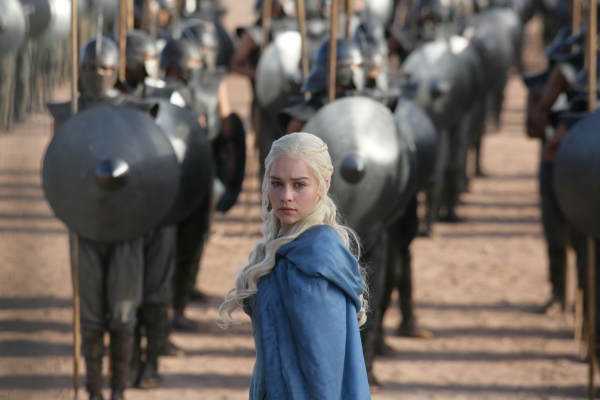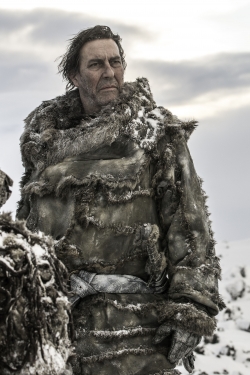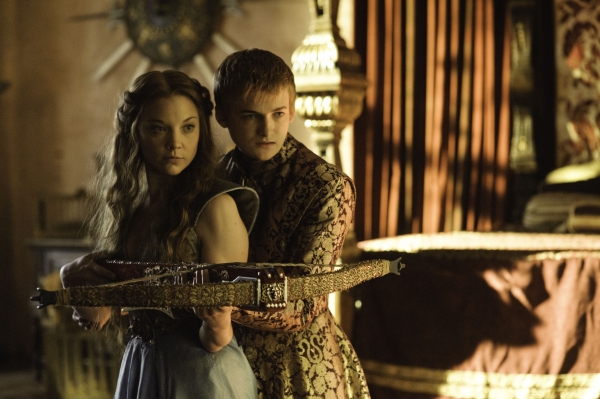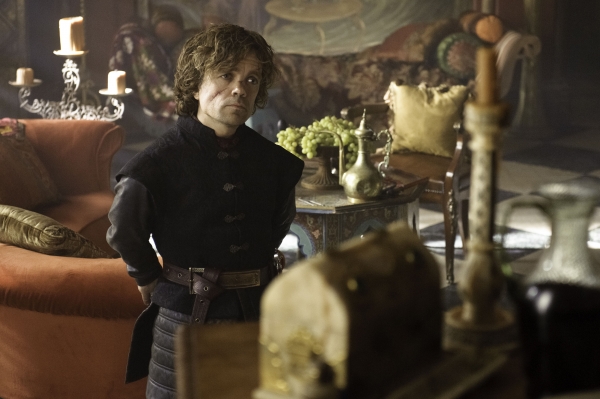Interview with Standby Art Director, Philippa Broadhurst
Game of Thrones: Series 3
Interview with Stand By Art Director, Philippa Broadhurst

Philippa Broadhurst is a Stand By Art Director and former Graphic Designer working in Feature Films and TV Drama in the UK.
Her credits include the Emmy-winning Game of Thrones, Downton Abbey & the oscar-nominated An Education. She has also worked on Made in Dagenham, Peep Show, Ashes to Ashes and commercials for Park Village, Rattling Stick and Weilands.
In 2012, Philippa began work on the third season of Game of Thrones as a Stand By Art Director. Philippa is a member of thecallsheet and she took time to answer a few questions about her job and the new series.
Game of Thrones returns to Sky Atlantic in April. What can you tell us about the new series?
Nothing specific! We all sign very stringent confidentiality contracts, but of course with the books most fans have some idea what they’re going to get in Season 3. What I can say is it’s certainly ramped up a level in terms of scale, and there are some very shocking moments.
Game of Thrones is shot in several countries. Where has this series taken you?
We’re based in Belfast, but we also shoot in Croatia, Morocco and in Iceland.
There are so many huge sets on Game of Thrones, how do you prep for this series in particular?
The size and number of the sets doesn’t really alter the way in which I prep – a standby always has to break down the script in the same way, whether huge scenes involving 900 extras, or one involving only 2 key characters. Some of the larger scenes obviously require you to be conscious of the number of extras and scope of background action you will have to populate with appropriate props/action. Most importantly, each set is meticulously designed, so staying in touch with the designer to ensure I understand the look/atmosphere we’re trying to achieve with each one, is vital.
What’s the most challenging aspect when doing Game of Thrones and what’s the most exciting part?
For me the main challenge is that we have 2 main units shooting all the time, so as a standby I have to break down the entire script, yet I’ll only be filming roughly half of the scenes. Sequences that alternate between the 2 units present the biggest challenge, in terms of which unit establishes character props or locations, and maintaining the continuity between us.

You worked on the first two series of Downton Abbey. Did you know it would be such a critical and ratings success?
No, when we started we had no idea that it would capture the public’s imagination as strongly as it did. The level of international success was also completely unexpected! When we began it had actually been commissioned for 3 series, and was a complete story – the level of success that came about persuaded Julian to keep writing, so now it is more of a continuing drama. Difficult for those actors who signed a 3-year deal, who are now suffering the backlash of leaving, when it was only ever supposed to run for 3 seasons.

What are the biggest challenges on a period drama?
You have to know so much about the life of the period – what people do in their spare time, what inventions are around or yet to come, and really basic everyday details such as what size paper is in use. You also need a thorough understanding of period styles to ensure you’re creating a true visual narrative, but also because there will always be a change on the day that requires you to know if some aspect of architecture or furnishing that wasn’t going to be seen or has been asked for is appropriate or not. It is also easy to fall into the mistake of assuming that since a style was around at the time, it can be used extensively, for example just because you’re filming a 1980s drama does not mean all aspects of the design should be from the 1980s – it is actually the 1970s style that will likely be dominant because people don’t rush out and pepper their houses with every latest thing. You also have to be mindful of what your modern audience perceives that period to look like, whether it actually does or not – details are all choices based on what is accurate, what your audience believes to be accurate, and what serves the story best visually.
What has been your greatest day at work?
My greatest day at work has to be my first day on my first film ... just walking through Pinewood and feeling all that history was magical. I've always been a big fan of British films, especially of the 40s - 60s, so just seeing the "reserved for Peter Rogers" was ridiculously exciting.
If you could have worked on any production or with any person, what or who would it be?
If I could have worked on any production it would probably have been The Company of Wolves - probably the film that had the biggest impact on me from a design and story standpoint ... but close second and third would be Brazil and the Baby of Macon ... and right now I'd love to work on a Del Toro film, but luckily there's still time for that.
Philippa Broadhurst is a member of thecallsheet.co.uk and members can view her profile page here
thecallsheet.co.uk is a members only network for professionals working in Film and TV in the UK. With over 3,000 members and a database of over 50,000 productions, people and companies, we make it easy to find the best in the industry.